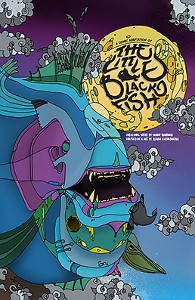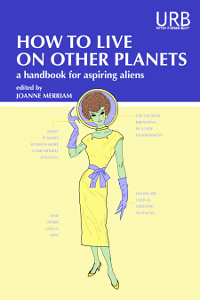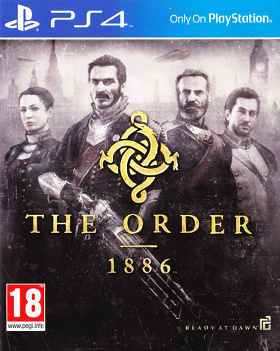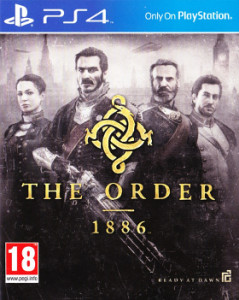This was my first year of PlayStation Plus. The service has a number of features, like cloud space to backup save files, and discounts on top of usual sale prices. But the one I’m focusing on here is the games. During 2015, there were two titles per console per month (PS4, PS3 and PS Vita). I had a PS4 and PS3 early on, and borrowed a Vita a few months in.
I only played games I thought I might like. This is mainly single player games with a story, with a preference for fantasy and science fiction. Which means I had a reasonable chance of liking the games, as I’d weeded out most of the ones I’d hate before I played them. It says bad things about the ones I hated anyway.
Where a game title is a link, it goes to a longer review of the game. I’ve given some estimates of playtime, though most titles on PS+ are on the shorter side. The consoles listed are for the version given away free… some of the games are available on the others too.
January
inFAMOUS: First Light (PS4) – Fetch has neon powers in a world where conduits (superpowered people) are illegal. When her brother is kidnapped, she uses her powers to find him, but risks being captured in the process. I didn’t initially like the game much, but I warmed up to it. As an introduction to the series, it’s a bit of a sharp learning curve (the combat tutorial comes after the first fight, for example). The neon powers are nice and the game does play smoothly. The world was a little generic feeling though. [3D Action]
The Swapper (PS4 | PS3 | PS Vita) – A person in a spacesuit is launched in an escape pod and lands on a planet. She soon discovers a device called the swapper, which create clones and swaps the mind/soul between them. The basic gameplay is a puzzle game, using the swapper device. What makes this game is the intriguing storyline that binds the puzzle rooms together. As more of the area is accessed, there are a number of mysteries. What are the rocks everywhere? What happened to the crew? What does the swapper really do? And who is in that spacesuit? The art style is also unique, as it’s made from found objects, rather than being computer generated. This is a great puzzle game, with a good balance of story to puzzles. [2D Puzzle Platformer]
Prototype 2 (PS3) – While James Heller is serving in the military, a zombie virus outbreak leads to his wife and daughter being killed by the infected. When he returns, he ends up infected with a form of the virus that turns him into a superhuman. In this game, you can literally pull someone’s arms off and beat them with them. Which does get a bit gory, but I found it too over-the-top to really take seriously. The thing that’s unsettling is the oppression. The people in the quarantine zones are treated terribly, in a way that’s not too far from the real world. James is initially taken in for experiments, which is chilling given the history of using black people for unethical medical experimentation in the USA. That atmosphere, and a smooth superpowered combat system, make for an interesting game. The weakest parts were its handling of women (it starts with fridging his family, which sets the tone here) and not fleshing out some of the subplots very well. [3D Action]
February
Apotheon (PS4) – The Gods of Olympus abandon humans. A man called Nikandreos fights his way to Olympus to claim their powers and save humanity. I was taken by the art style of the game, which is based on Greek pottery. The gameplay was reasonable in the bit I tried. The thing I couldn’t get used to was the audio, as it played through only one ear at a time, depending on which way the character was facing. This probably sounds fine with speakers, but it’s really odd (and difficult to hear anything, especially when it’s my bad ear) with headphones. This game needed a headphone mix or an option to turn off directional sound. Probably a fun game if you have speakers. I might come back to it at some point and turn the sound off. [2D Adventure]
Transistor (PS4) – A failed attempt on Red’s life leaves her unable to speak. Her friend’s body is killed, but his voice lives on in the Transistor, the giant sword used to attack her. They hunt down her attackers and find out what’s happening in the city of Cloudbank. Transistor is cyberpunk meets art nouveau in terms of style. The combat is pseudo turn based with a detailed skills system. The mystery of what’s going on, and the nature of Cloudbank, is interesting… if somewhat tragic. It has some QUILTBAG representation, which had some issues (note the tragic part), but I did appreciate that one of the profiles was for a non-binary person. [Isometric RPG]
Thief (PS3) – Garrett is a thief, who decides he knows best and steals one of his friend’s tools. She ends up hurt / possibly dead when she doesn’t have the tool when she needs it. Garrett has angst. This game started glitching on me from the start. The tutorial stopped giving me instructions, and the subtitles in the first chapter were completely out of sync. That said, the glitches aren’t why I stopped playing. I intended to go back, but there were always other games I wanted to play more. It suffered from being passable, rather than something I was excited to play. Will Garrett stop angsting or is the smokey eyeshadow forever? I might never know. [3D Stealth]
March
Valiant Hearts: The Great War (PS4) – The story of several people living during World War I. This is an educational puzzle game, which covers the main events in the war. Collectibles are items from the time period, which give additional historical facts. The focus is on the hardships of everyday people, rather than glorifying battle. Cartoon graphics act to soften the gore, though it doesn’t pull any punches when it comes to showing the emotional tragedy of war. This is a well-crafted game, but the theme meant I couldn’t play it for very long in one sitting. [2D Puzzle Adventure]
Papo & Yo (PS3) – Quico escapes from his abusive father into a fantasy world, where his best friend is Monster. But Monster is addicted to eating frogs, which send him into violent rages. This game is based on the developer’s experience of an abusive alcoholic father, which shows in the careful handling of the topic. Quico tries to take on responsibility for Monster, by removing frogs where he can, and searching for a cure for Monster’s problem. But the game doesn’t look to blame Quico for Monster’s (or his father’s) behaviour, even if at times he blames himself. In terms of puzzles, the world looks realistic, with buildings and streets. Until buildings grow legs and walk or stairs are pulled out of walls. I felt the puzzles could have gone up in difficulty a little more during the game, and there are some rough edges on the graphics (like character mouths not moving during speech), but this is a unique game dealing with a difficult topic. [3D Puzzle Adventure]
Sherlock Holmes: Crimes and Punishments (PS3) – Holmes and Watson set out to solve a number of tricky cases. The main gameplay is finding clues and interviewing people, with some puzzles and QTEs on the way. Unlike many detective games, the player can choose any of the suspects. Pick the first one that pops up based on circumstantial evidence, or keep going until you’ve found all the possible suspects. There is a right or wrong answer, but the game doesn’t stop you choosing the wrong one. This makes it the best detective game I’ve played for actual detective work. In criticisms, the overall story linking the cases wasn’t very strong. I’d have liked to find some more hints of that during the cases. The loading times were a little long. It’s debatable if the green mystic guy was intended to be the most stereotypical mystic Asian possible (as in, he may have been acting that way to sell stuff to London’s elite), but he didn’t get enough character time to really know. [3D Detective]
CounterSpy (PS4 | PS3 | PS Vita) – You work for a secret agency, trying to stop the world’s superpowers from blowing up the moon. With digs at the cold war (with both sides being as destructive as each other), this game has its funny moments. The big issue is the procedurally generated levels. Technically it means it’s replayable. The reality is the random levels can turn out to be impossible for the current character progression…. or too easy. They can be restarted infinitely to get a level design that works, but it does get tedious. Very soon, all the levels start to look the same. [2.5D Shooter]
April
Never Alone (PS4) – When an endless blizzard hits, Nuna and Fox head out into the storm to find the source. This game is a reimagining of an Iñupiat (Alaska Native peoples) story, produced in collaboration with the community. As well as the puzzle platformer gameplay, there are little videos explaining things about the stories and culture. The atmosphere is great, with the endless winds and various spirits that help or hinder the friends along the way. It can be played as a two-player co-op or alone (switching between the characters). For the most part, it’s fairly easy, but single player mode can have some issues with the AI of the other character putting them in danger. [2D Puzzle Platformer]
Aaru’s Awakening (PS4 | PS3) – Aaru is a war machine from an ancient war, who is awakened to fight a new threat. Interesting idea and lovely artwork. However, it comes complete with clunky controls and a narrator who sounds like a child being forced to read in class. As well as the controls, the gameplay focuses exclusively on speedrunning the levels. So there’s never really time to stop and look at the art, experience any sort of story (outside of the awful narrated sections) or learn about the world. If you want a platformer where the biggest challenge is the controls, and there’s no content outside of doing everything really fast, this might be for you. This was the worst game I tried all year. [2D Puzzle Platformer]
MonsterBag (PS Vita) – Nia leaves her bag behind when she goes to school. But the bag is a monster, who sets out to find her. This is a puzzle game where the bag has to travel along a line of people to reach Nia. The early levels involved finding items and using them/giving them to people to clear the path along the line. I enjoyed the start, as it was something a bit different, though could have done without the cannibals trope part. The big problem was the later levels discarded this concept, and instead become about precisely timed jumps between near-identical line members. I’d have liked the game a lot more if it’d stuck with that opening puzzle concept. But as it was, the end was rather generic compared to the beginning. [2D Puzzle]
May
Ether One (PS4) – You work as a restorer, going into the minds of dementia patients to help them regain their memories. This time, the memories centre around Pinwheel, a Cornish village, and the mining disaster that happened there years ago. Players can either just explore (finding ribbons) or can stop to do puzzles (put together projectors, which give more story information). I felt the game did a good job of presenting the confusion of dementia. Memories were in fragments and blurred into each other, making it hard to piece together exactly what went on. The initial release on PS4 was buggy, but after the patches, this was an enjoyable game (though sad in places, given the theme). [3D Adventure]
Hohokum (PS4 | PS3 | PS Vita) – A snake plays hide-and-seek with their snake friends. This is an exploration game, where the exact objectives are left for the player to discover. Completing tasks can help reveal the hidden snake in every world. Or just wander around the colourful scenery seeing what everything does. I enjoyed the art style and gameplay of this one, as I’m a fan of exploration games. However, it isn’t a good choice if you like games with clear objectives. [2D Exploration]
The Unfinished Swan (PS4 | PS3 | PS Vita) – When Monroe’s mother dies, he keeps her favourite painting: an unfinished swan. The swan disappears one night and he follows it into a strange world. This is a shooter with a difference, as it’s about shooting paint at the environment. The first level is completely blank and the player has to paint it to see where they’re going. No game mechanic overstays its welcome, as each level uses the paint shooting in different ways. It’s a sweet story, of a boy finding out more about his family, that captures the storybook feel perfectly. Note that the whiteness of early levels may cause migraine issues for some players. [3D Shooter Adventure]
Race the Sun (PS4 | PS3 | PS Vita) – A solar ship has to race towards the sunset, to avoid losing power. This is an endless runner, with basic geometric graphics. It’s a solid example of the genre, and has the usual expected features (like missions to achieve during the runs and levelling up). I was too terrible at it to get a lot out of it, as I died too quickly. But it’s not a bad title for someone looking for an endless runner to play. [3D Endless Runner]
Murasaki Baby (PS Vita) – Baby is looking for Mommy and needs you to guide her. Baby lives in a creepy world of monsters, where everyone has their mouth on top of their head (including Baby). Creepily cute would be a good description of the art style. This game is also very much a Vita game. The player leads Baby by taking her hand with the front touchpad, and the background can be changed by swiping the back touchpad. Some levels require turning the Vita upside-down. It uses the Vita features in a way most games don’t. This can be awkward at times, but the game is only a few hours, so it’s not too bad. (Putting the Vita into flight mode is recommended for earning trophies). [2D Puzzle Platformer]
June
Super Exploding Zoo! (PS4 | PS Vita) – This is made by the same developers as Hohokum, but is a very different game. It’s a puzzle game solved by directing herds of exploding animals to destroy aliens. Nothing wrong with it really, but it wasn’t enough to keep my attention for long. I like a bit more story with my puzzles. [2D Puzzle]
July
Rocket League (PS4) – Rocket-powered cars play football (soccer). It has online multiplayer and offline single-player modes. I’m not a big fan of sports games, but thought this looked interesting enough to try. It was fun enough for me to get the trophies, but it’s not something I’d play for a long time. However, it’s not because the game is bad. It’s polished and the online games could keep a sports fan entertained for a long time. This is a better investment than the big name sports titles where they’ll close the servers after a few months. [3D Sports]
MouseCraft (PS4 | PS3 | PS Vita) – A cat scientist runs experiments on mice, to power his mysterious machine. This puzzle game is like a cross between Lemmings and Tetris. The player places tetromino blocks to create a path for the mice. The larger story is barely there, so there’s not a lot to get invested in. This is the sort of puzzle game that fills a few minutes here and there. [2D Puzzle]
Entwined (PS4 | PS3 | PS Vita) – A fish and a bird are in love across many lifetimes. Entwined is a rhythm game. The fish and bird fly down a tunnel, and each stick on the controller moves one of them. They have to hit patterns in order to reach the end of each lifetime, where they combine to form a dragon. The main part of the game is pretty relaxing, though the challenge mode is not. [Rhythm]
Rain (PS3) – A boy sees an invisible girl being chased by invisible monsters, due to them showing in the rain. He heads out to follow them, becoming invisible himself. This is a short adventure, with puzzles based around being visible in the rain, and invisible outside of the rain. I enjoyed the melancholy atmosphere and rain-based puzzles. It’s a reasonably easy game, though note it doesn’t have spoken narration. [3D Puzzle Adventure]
August
Sound Shapes (PS4 | PS3 | PS Vita) – A platform game where everything makes music. Collecting notes on the way adds beats to the score. This is pretty fun. There’s not a lot else to say about it, as there’s no hidden depth or storylines here. If you like the sound of a musical platformer, you might enjoy this. [2D Platformer]
Stealth Inc. 2: A Game of Clones (PS4 | PS3 | PS Vita) – A clone escapes in a factory and works to free other clones. Death is a minor inconvenience in this game, making it easier to travel around and complete the various puzzle rooms. Perfecting the rooms is a little harder. [2D Puzzle Platformer]
September
Grow Home (PS4) – BUD the robot is collecting star seeds to save his planet. But first, he has to grow the star plant to the stratosphere so that it’ll flower. Robots, giant star plants, and the occasional mushroom, made this game right up my alley. BUD’s controls take a little getting used to, as gravity is low on the planet (easy to run off things) and climbing is done by controlling each arm separately. There is a clear visual and sound to let you know when a hand has grabbed on successfully, so this isn’t too bad with a bit of patience. Later on, he gets faster ways to travel. My only real complaint is one of the skins for BUD was a tad dubious (a Native skin, with a feather, that makes BUD closer to nature… might as well have called it the Noble Savage skin), but this is a small optional thing. You can remain as default BUD and grow your plant to space without that. Overall, a fun little game with a cute robot. [3D Exploration]
Teslagrad (PS4 | PS3) – A boy flees his home chased by people. A steampunk puzzle game sounded like my sort of thing, but this just didn’t grab me. I think one of the issues is the story was told by tiny pictures found on scrolls, which were hard enough to see, let alone interpret. I didn’t end up getting very far, as I was indifferent to it. There’s nothing really wrong with the game as such. It plays well enough. It just didn’t have that extra spark. [2D Puzzle Platformer]
October
Broken Age (PS4 |PS Vita) – Vella is about to be offered as a sacrifice to a monster to save her village. Shay lives on a spaceship and is bored by his repetitive routine. Broken Age is a point-and-click adventure following the lives of the two teens. It’s reminiscent of older point-and-clicks, with quirky characters and jokes. The puzzles are the object collection/combination style typical of the genre. It’s an entertaining game, though I enjoyed Vella’s side of the story more than Shay’s. [Point-and-Click Adventure]
Unmechanical Extended (PS4 | PS3) – A little helicopter robot is kidnapped, and has to escape from an underground facility. Also included is the extended adventure, where two robots are kidnapped and work together to escape (not a co-op thing… you only control one of them). I found most of the puzzles straightforward. There’s no moon logic here, so not a lot to get stuck on. The atmosphere of the underground base is great and I loved the robot design. Don’t expect to find out the wider story though, as that’s left to player interpretation. This was a fun little game to fill a few hours. [2D Puzzle Adventure]
November
The Walking Dead: Season Two (PS4) – Clementine is a child survivor in a zombie apocalypse. This is an interactive story, so is mainly listening to dialogue and doing a few QTEs. The issue being I didn’t care much about the story. Because it’s so unrelentingly bleak, and because everyone dies, it makes the story rather pointless. You make a choice that a character will remember, but they die in the next scene, so the choice was irrelevant. There aren’t any stable character relationships to get behind, because of the whole death thing. The texturing on the QTE prompts also made them difficult for me to see and follow (though at least the sequences were pretty easy and could be repeated). It passed the time and was fine as a free game, but not something I’d pay out for on a budget. [3D Interactive Story]
December
Far Cry 3: Blood Dragon (PS3) – This short title is a completely separate story to the main Far Cry 3 game. It’s set in the early 2000s, as might have been written by people in the 1980s. Nuclear wastelands, lots of cyborgs and neon, and so forth. Though I could appreciate the retro setting, I found the gameplay rather average. [3D Shooter]
King’s Quest – Chapter 1: A Knight to Remember (PS4) – An elderly King Graham tells stories to his granddaughter about how he went from no one to king, starting with how he became a knight. This is a light-hearted fantasy adventure story, with quirky character and puns. I liked that a number of the puzzles had multiple solutions (and which solution is chosen can affect how other characters view Graham). It was longer than I expected for an episodic game (around five hours for this episode). I plan to get a season pass to continue with the story at some point. [Adventure]
2015 Overview
I enjoyed enough of the games to get value for money. A year’s subscription was £40 in 2015, at a time when the average big game costs £40-£60, and the average smaller game costs around £10. Even with sale prices, I’d have struggled to get this many games for £40. I’m looking forward to next year.
Top Five: This was difficult, as I liked a lot of the games. In no particular order…
- The Swapper
- Transistor
- Never Alone
- Grow Home
- King’s Quest
Bottom Five: I feel bad for four of the five games here, as I didn’t hate them. I just didn’t love them. They’re not in the same league as Aaru’s Awakening, which I hated. But I suppose it’s a good thing I didn’t have five games I truly despised.
- Aaru’s Awakening
- Thief
- Super Exploding Zoo!
- Apotheon
- Teslagrad
 First Published: 15th March, 2016
First Published: 15th March, 2016 First Published: 16th February, 2015
First Published: 16th February, 2015
